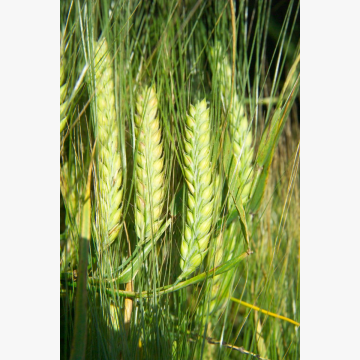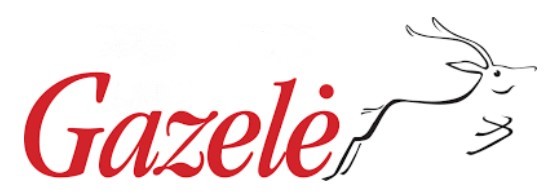FOR CONSULTATIONS APPLY TO:
Commercial director
Lina Smalskienė
tel. +370 618 02 551
e-mail linak@agrolitpa.lt
Sales manager
Tautvydas Kliučininkas
tel. +370 681 35 093
e-mail tautvydask@agrolitpa.lt
Sales manager
Eglė Petkevičienė
tel. +370 626 95 458
e-mail eglep@agrolitpa.lt
Sales manager
Kotryna Nakrošytė
tel.: +370 601 39 282
e-mail kotryna@agrolitpa.lt
FEEDWAY
An early, high-yielding, extremely resistant to lodging and resistant to leaf diseases, large-grain two-row fodder barley
- Average grain yield – 7.97 t/ha
- Yield potential – 10.29 t/ha
- Average duration of the vegetation period – 83.4 days (counting from seed germination to grain waxy maturity)
- The period from germination to heading – 41.7 days
- The average height of plants – 54 cm
- Resistance to lodging – 8.7 points (when 9 points – very resistant to lodging variety)
- 1000 grain weight – 52.99 g (coarse grains)
- Weight of hectoliter – 67.7 kg/hl
- Content of grains larger than 2.5 mm – 95.7 %
- Protein content – 12.7 %
- Starch content – 62.81 %
*Research on the economic value of the variety was conducted in 2017 and 2018, in Šilutė, Kaunas, Pasvalys and Utena AVT departments.
** Field tests for disease resistance in which no fungicides were used, 2017-2018, barley was slightly injured by Helminthosporium gramineum, Helminthosporium teres and Helminthosporium sativum (Drechslera sorokiniana). The resistance of the 'Feedway' variety to spot diseases in all sections of the AVT was evaluated with an average of 7-9 points. In Kaunas AVT department in 2017 barley was somewhat more injured by ear fusarium. Resistance of Feedway variety was rated 8 points (9 points – a very resistant variety). No violations of other diseases were detected.
*** In 2018 the period from seed germination to the flowering of plants was in all sections of AVT
extremely dry and warm. The average daily temperature in Kaunas and Utena AVT departments was by 2-3 °C, and in Pasvalys and Šilutė AVTS it was even up to 6 °C higher than the long-term average. The amount of precipitation was, respectively, 2.1 to 4.3 times lower compared to the long-term average. The resulting climatic conditions had a very strong impact on all tested varieties, the plants were lower, there tillering was weak, and flowering started 4-12 days earlier than usual. These factors shortened and led to almost the same duration of vegetation of different varieties, and had a significant impact on the grain yield.
- Yield potential – 4 points (out of 5)
- Plant height – 2 points (out of 5)
- Resistance to lodging – 4 points (out of 5)
- Resistance to powdery mildew – 4 points (out of 5)
- Resistance to net block – 4 points (out of 5)
- Resistance to rhynchosporiosis – 3 points (out of 5)
- Maturity – 3 points (out of 5)
- Number of grains per ear – 3 points (out of 5)
- Grain coarseness – 4 points (out of 5)
- Crop density – 4 points (out of 5)
- In 2019-2020, it was the most productive variety in Poland
- It has excellent adaptability to various climatic and soil conditions in Europe. Registered in Denmark and Poland, and in registration studies in Germany and the Baltic States
- Very early-headed and early maturing variety
- It has good resistance to soil acidification at early age, which enables cultivation on poorer soils
- It is characterized by a very good resistance to dark brown barley blotch and good resistance to powdery mildew, barley rust and rhynchosporium
- Medium short variety (approx. 60 cm) with very good lodging resistance
- Coarse grain with very good uniformity, low offal content and high TGW
- The recommended sowing rate in optimal sowing term is approx. 280-320 germinating seeds per 1 m2 (approx. 140-160 kg/ha)
- Time of ear emergence – early
- Time of ripening – early
- Height of the plant – medium short
- Weight of 1000 grains – high
- Lodging resistance – good (6.4 points)
- Protein content – high (6 points)
Resistance to diseases (when 9.0 – very resistant):
|
|
Low |
Medium |
High |
||||||
|
Mildew |
|
|
|
|
|
|
|
8,2 |
|
|
Net blotch (Helminthosporium teres) (Pyrenophora teres) |
|
|
|
|
|
|
7,2 |
|
|
|
Dark brown spot (Helminthosporium sativum) |
|
|
|
|
|
|
7,5 |
|
|
|
Rynchosporium (Rynchosporium secalis) |
|
|
|
|
|
|
|
8,1 |
|
|
Barley rust (Puccinia spp.) |
|
|
|
|
|
|
7,5 |
|
|
The varietal parameters may differ from those indicated here when the testing circumstances differ from quondam
Recommended sowing rate:400-450 plants/m² or 180-210 kg/ha
Keravos sreet. 17, Kerava,
LT-38 131 Panevėžys district, LITHUANIA
Enterprise's code 168598128
VAT code LT685981219
Tel. +370 615 11 315
E. mail info@agrolitpa.lt




.JPG)

